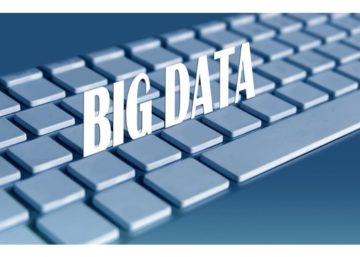Bringing out the meaning of data is becoming even crucial with growing data volume. Today’s data, especially coming from multiple sources requires to perceive multiple dimensions all at once! The good news is that data visualisation techniques are maturing rapidly. Thoughtful implementation can quickly separate ‘wheat from the chaff‘. Thoughtful visualisation can exploit human visual system and extract information from data very quickly.
Data visualisation are mainly categorised either as explanatory or exploratory. Explanatory visualisation aim to communicate key findings from the datasets where as exploratory visualisation facilitate the user in exploring the dataset and let them unearth their own insights.
So, whatever the type of your visualisation is, explanatory or exploratory, you can make it more effective- first by identifying your goal and by helping your audience make sense out of it easily and quickly.
Identifying ultimate visualisation goal
Data visualisation is the only part of analytical process that your audience is exposed to. So, it is important for you to ask certain questions and set the right goal for the visualisation. Start by asking following questions
- Why I am looking at this data?
- What’s so important about this data?
- What do I need my audience to know or do with this data?
These questions will get you started with the point of view that your audience will seek while looking at the data. Now it is up to you how to make it a comfortable experience for the audience to browse the data through visualisation.
Understanding how your audience is going to perceive what you present
Your audience may be looking at the data for comparing, associating, ranking, searching, locating or verifying. According to Edward Tufte, the most influential theoretician in visualisation and information design, ‘Effective analytical design entail turning thinking principles into seeing principles’. Meaning, the design architecture should assist analytical thinking.
Lets see how you can do that!
Leverage Pre-attentive attribute
Our iconic memory allows us to perceive things without consciously realizing it. By leveraging pre-attentive attributes in visualisations to create visual hierarchy you can facilitate your audience in navigating the visualisation. However, using pre-attentive attributes to draw audience’s attention to make your point should be used mostly in explanatory visualisations.
[/fullwidth_text] [spb_single_image image=”10112″ image_size=”full” frame=”borderframe” intro_animation=”none” full_width=”no” lightbox=”no” link_target=”_self” width=”1/1″ el_position=”first last”] [spb_text_block pb_margin_bottom=”no” pb_border_bottom=”no” width=”1/1″ el_position=”first last”]
Without consciously knowing what information will follow, user can visually see the distinction at a glance.
[/spb_text_block] [spb_single_image image=”10113″ image_size=”medium” frame=”borderframe” intro_animation=”none” full_width=”no” lightbox=”no” link_target=”_self” width=”1/1″ el_position=”first last”] [fullwidth_text alt_background=”none” width=”1/1″ el_position=”first last”]
Avoid what humans are not good at ascribing
Humans are not good at judging quantitative value to two-dimension
2D area, Angles and pie-charts- especially 3D- are not good to present data that our brain can perceive with actual proportion.
In the below mentioned pie chart, Store-2’s 31% is visibly larger then Store-1’s 34% due to the 3D effect of the pie chart
[/fullwidth_text] [spb_single_image image=”10114″ image_size=”full” frame=”borderframe” intro_animation=”none” full_width=”no” lightbox=”no” link_target=”_self” width=”1/1″ el_position=”first last”] [fullwidth_text alt_background=”none” width=”1/1″ el_position=”first last”]
Leverage human visual perception
Human visual system’s function as per Gestalt principles of perception especially on proximity, similarity, enclosure, continuity and connection works equally fair and defines how our audience is going to perceive our data as a visualisation.
Just by using background color we have group data points that fall into the category ‘Desired Score’. So, it is easy to make the point clear to the audience.
[/fullwidth_text] [spb_single_image image=”10116″ image_size=”full” frame=”borderframe” intro_animation=”none” full_width=”no” lightbox=”no” link_target=”_self” width=”1/1″ el_position=”first last”] [fullwidth_text alt_background=”none” width=”1/1″ el_position=”first last”]
Reduce cognitive load
Every element in the visualisation adds cognitive load on your audience’s brain. Avoid using multiple colors, each one may demand attention resulting into a clutter! Thus, leverage colors only to draw attention of audience where you want to make your point.
Using proper labels directly can reduce eye movement from legends to the chart, back and forth. Guide your audience to draw attention easily and quickly.
[/fullwidth_text] [spb_single_image image=”10117″ image_size=”full” frame=”borderframe” intro_animation=”none” full_width=”no” lightbox=”no” link_target=”_self” width=”1/1″ el_position=”first last”] [fullwidth_text alt_background=”none” width=”1/1″ el_position=”first last”]
In conclusion, making your point though visualisation as easy as possible requires lot of deep thinking. By exposing your audience to each different type of chart you are asking them to either compare or draw attention to some element of the visualisation. For example, by showing a pie-chart or donut chart you are asking your audience to compare area, angles and arc! In many cases, there isn’t a straightforward way to display the data. There exist multiple ways to display the same data so, it is up to you how you want your audience to interpret it!
[/fullwidth_text]


